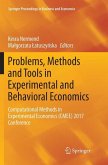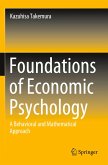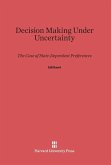This book is an exploration of the ubiquity of ambiguity in decision-making under uncertainty. It presents various essays on behavioral economics and behavioral finance that draw on the theory of Black Swans (Taleb 2010), which argues for a distinction between unprecedented events in our past and unpredictable events in our future. The defining property of Black Swan random events is that they are unpredictable, i.e., highly unlikely random events. In this text, Mandelbrot's (1972) operational definition of risky random unpredictable events is extended to Black Swan assets - assets for which the cumulative probability distribution or conditional probability distribution of random future asset returns is a power distribution. Ambiguous assets are assets for which the uncertainties of future returns are not risks. Consequently, there are two disjoint classes of Black Swan assets: Risky Black Swan assets and Ambiguous Black Swan assets, a new class of ambiguous assets withunpredictable random future outcomes.
The text is divided into two parts, the first of which focuses on affective moods, introduces affective utility functions and discusses the ambiguity of Black Swans. The second part, which shifts the spotlight to affective equilibrium in asset markets, features chapters on affective portfolio analysis and Walrasian and Gorman Polar Form Equilibrium Inequalities. In order to gain the most from the book, readers should have completed the standard introductory graduate courses on microeconomics, behavioral finance, and convex optimization. The book is intended for advanced undergraduates, graduate students and post docs specializing in economic theory, experimental economics, finance, mathematics, computer science or data analysis.
The text is divided into two parts, the first of which focuses on affective moods, introduces affective utility functions and discusses the ambiguity of Black Swans. The second part, which shifts the spotlight to affective equilibrium in asset markets, features chapters on affective portfolio analysis and Walrasian and Gorman Polar Form Equilibrium Inequalities. In order to gain the most from the book, readers should have completed the standard introductory graduate courses on microeconomics, behavioral finance, and convex optimization. The book is intended for advanced undergraduates, graduate students and post docs specializing in economic theory, experimental economics, finance, mathematics, computer science or data analysis.








